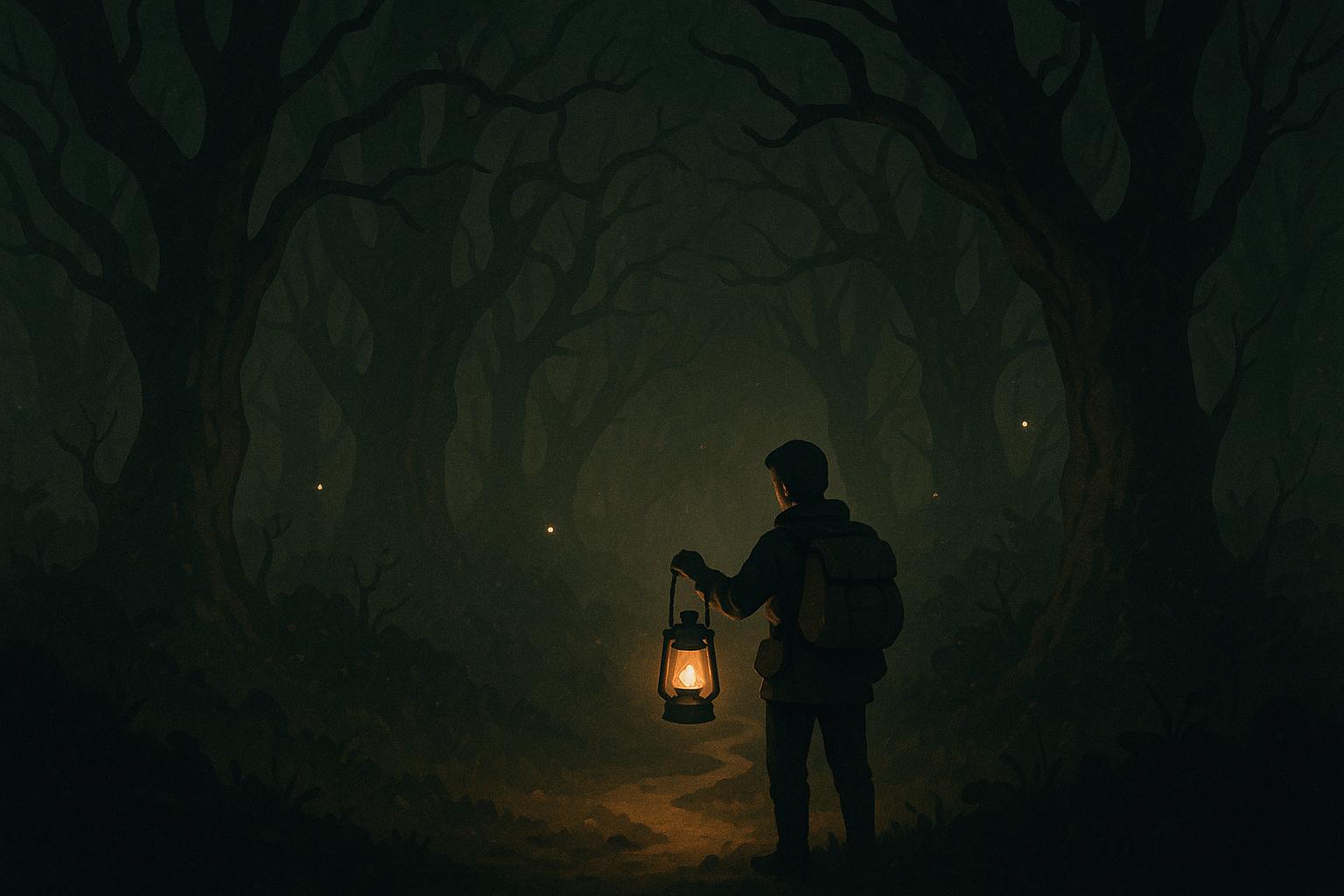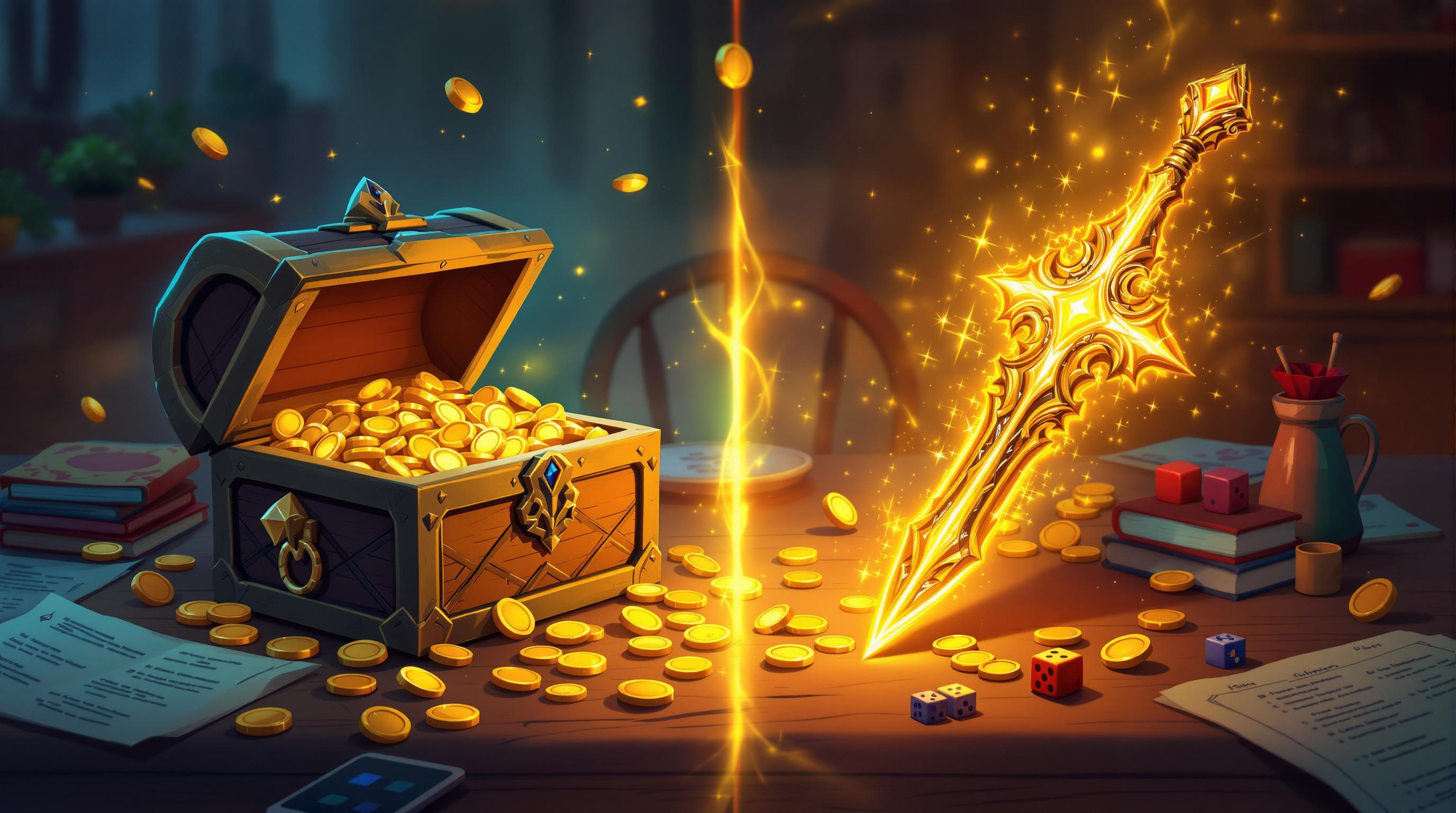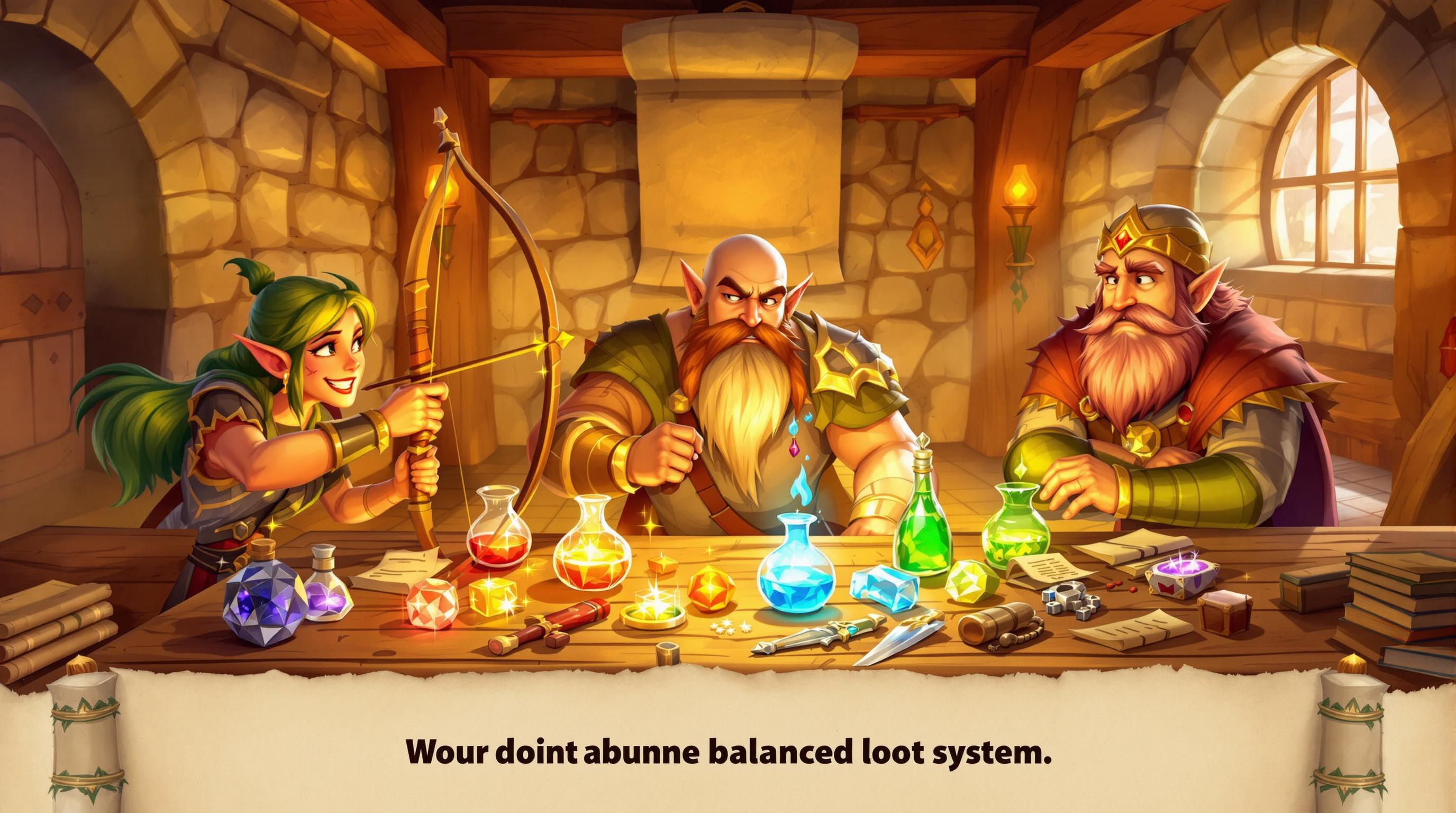Looking for a tabletop RPG designed for just two players? These games prove you don’t need a big group to have an incredible gaming experience. Whether you prefer action-packed adventures, emotional storytelling, or creative mechanics, these options cover a range of styles:
- Scarlet Heroes: Perfect for classic fantasy fans, this game scales traditional group adventures for two players with streamlined rules and a rich setting.
- Star Crossed: A romance-focused game using a Jenga tower to create tension and drama, ideal for exploring emotional connections.
- Runecairn: Wardensaga: A Norse-inspired RPG that captures the feel of Soulslike games, featuring tactical combat and a grim post-Ragnarok world.
- Gun&Slinger: A bold, card-based game where one player is a sentient weapon and the other is their human partner, set in a mysterious, decayed world.
- TTRPG Games Directory: A comprehensive resource for finding two-player RPGs tailored to your preferences, with tools for enhancing your sessions.
Each game offers something different, from deep character-driven stories to strategic gameplay. Two-player TTRPGs are a great way to dive into immersive narratives while keeping things simple and focused.
Quick Comparison
| Game | Themes | Complexity | GM Required | Replay Value | Emotional Focus |
|---|---|---|---|---|---|
| Scarlet Heroes | Fantasy, adventure | Medium | Yes | High | Medium |
| Star Crossed | Romance, tension | Low | No | Medium | High |
| Runecairn: Wardensaga | Norse mythology, combat | Medium | Yes | High | Medium |
| Gun&Slinger | Mystery, partnership | Medium | Optional | High | High |
Pick a game that fits your style, grab a partner, and start your two-player adventure today!
Why You Should Play Two-Player TTRPGs!
1. Scarlet Heroes
Scarlet Heroes is a standout choice for two-player tabletop RPGs, designed specifically for one Game Master (GM) and one player. Published by Sine Nomine Publications, this game allows a single character to take on adventures originally meant for full parties. Let’s dive into what makes this game such an excellent pick for duos.
One of the game's key features is its power-scaling mechanics, which enhance your character's abilities to ensure that encounters meant for larger groups remain both exciting and challenging. As Bailywolf, an administrator on RPGnet Forums, puts it:
"What it does is enable solo play with a single character getting the beef needed to handle conventional D&Dalike adventures which normally require parties to deal with."
Another highlight is the Fray die mechanic, which allows your character to automatically deal damage to weaker enemies while still keeping major encounters intense. Combined with modified damage rules and protections against instant death, these mechanics empower your hero without tipping the balance.
The game also makes it easy to adapt existing Dungeons & Dragons modules. The rulebook provides clear instructions for converting material from other systems, making it a versatile choice for fans of classic adventures.
Set in the Red Tide world, Scarlet Heroes offers a richly imagined backdrop inspired by Southeast Asia. This post-apocalyptic setting features a bestiary filled with region-specific monsters, unique magic items, and sixty adventure tags to help craft one-of-a-kind scenarios. The world brims with sword-and-sorcery vibes, complete with a history where demons emerged from the seas to wreak havoc.
The game’s rules are simple and streamlined, making them easy to learn and remember. It also focuses on storytelling rather than high-level mechanics, as most characters won’t progress beyond 10th level.
Though it’s perfect for solo play, Scarlet Heroes easily scales to accommodate more players. For two players, you can add extra enemies to maintain the challenge. With three players, the game suggests increasing enemy numbers by half to keep the balance intact. This flexibility makes it a great option for different group sizes while still delivering an engaging experience.
2. Star Crossed
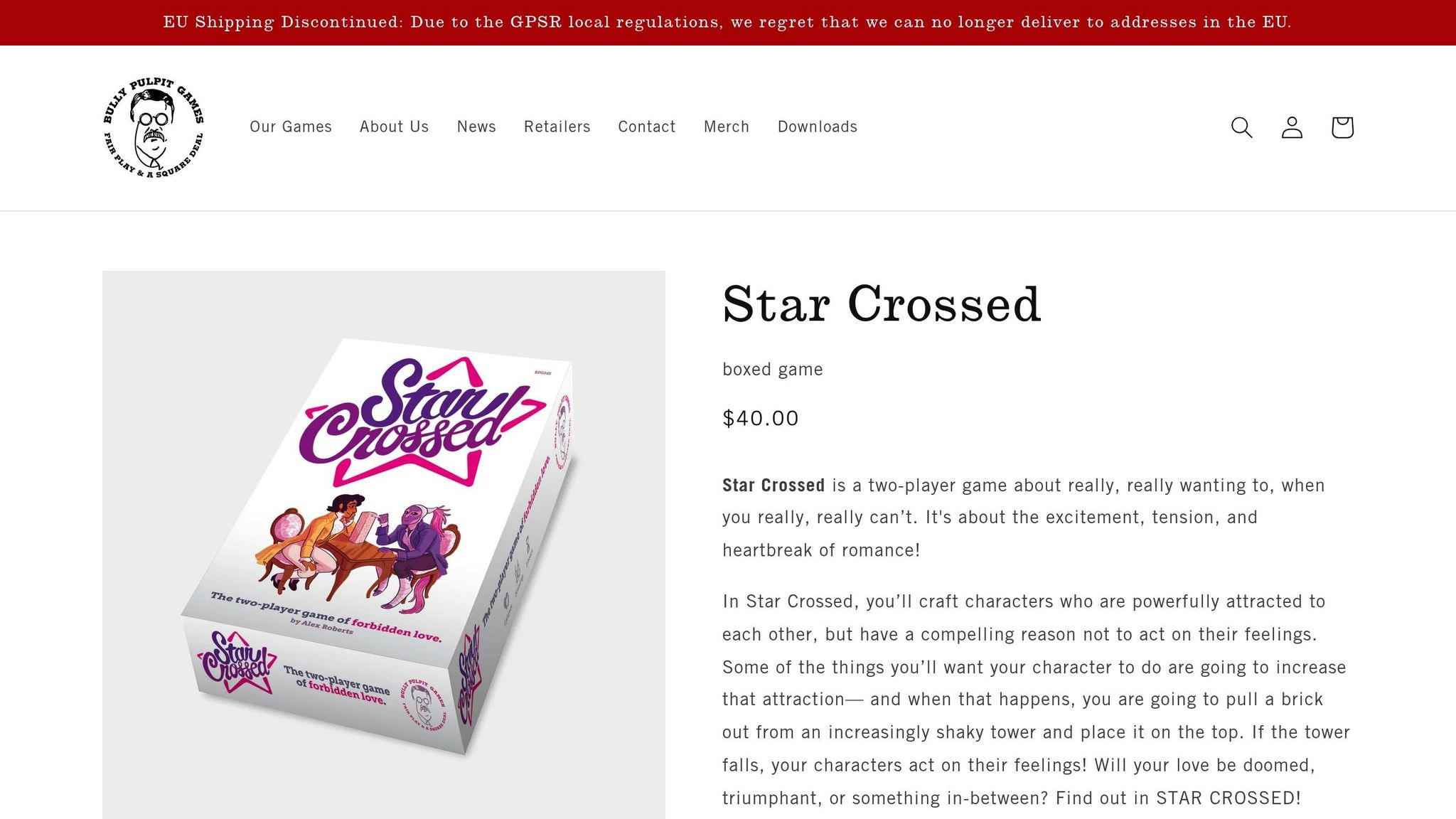
Star Crossed stands out by prioritizing romantic tension and emotional storytelling over the typical adventure mechanics found in many tabletop games. Designed for two players, it dives deep into the complexities of attraction and restraint, creating an experience where every interaction feels deeply personal. Published by Bully Pulpit Games, this game earned the 2019 Diana Jones Award for Excellence in Gaming, solidifying its reputation as a standout in the tabletop gaming world.
As Bully Pulpit Games describes it:
"Star Crossed is a two-player game about really, really wanting to, when you really, really can't. It's about the excitement, tension, and heartbreak of romance!"
The Jenga Tower Mechanic
What sets Star Crossed apart is its use of a Jenga-style tower to symbolize the delicate balance between two characters who are deeply drawn to each other but have compelling reasons to hold back. This isn't just a clever gimmick - it’s a powerful metaphor for emotional tension. Players take turns performing actions, and when an action heightens the characters' attraction, they must remove a block from the tower and place it on top. The tower’s eventual collapse signifies the moment when the characters give in to their feelings, with the consequences shaped by the tower’s instability at that point. If the tower remains intact by the end of the session, the characters never act on their desires, creating a dramatic and often bittersweet conclusion.
Perfect for Intimate Storytelling
With sessions lasting about two hours and requiring minimal setup, Star Crossed is perfect for intimate gaming experiences. James D'Amato of The One Shot Podcast Network perfectly captures the game’s emotional depth:
"The stories are sweet, sad, and sexy as hell. Playing feels like falling in love. I have only played one game so far, but it left a profound impression on me. It's one of those games that proves how beautiful roleplaying is as an art form."
While romance is at its core, the game’s mechanics are flexible enough to explore a variety of interpersonal dynamics.
Beyond Romance
Although Star Crossed is built around romantic tension, it can also be adapted to portray other types of relationships and conflicts. The game encourages players to connect emotionally through their characters, fostering a unique kind of storytelling. Epidiah Ravachol, the creator of Dread (a game that inspired Star Crossed), reflects on its tower mechanic:
"What I find surprising about the design - and what draws me to it - is not just how well the metaphor fits; but how the metaphor veers from that of Dread. Hiding in the gravity of that teetering tower is not the grisly finality of well-swung hammer or the existential threat of eternal void, but something far more terrifying: real human desire."
Star Crossed has found a particular niche among couples, with many praising its ability to strengthen communication and cooperation. However, some players have noted that the game can feel slow or repetitive as it progresses. For those seeking a group experience, the game offers a supplement called "Space Station Fobolex", which allows 4–20+ players to engage in a shared fictional setting, with each pair of players using their own tower.
3. Runecairn: Wardensaga
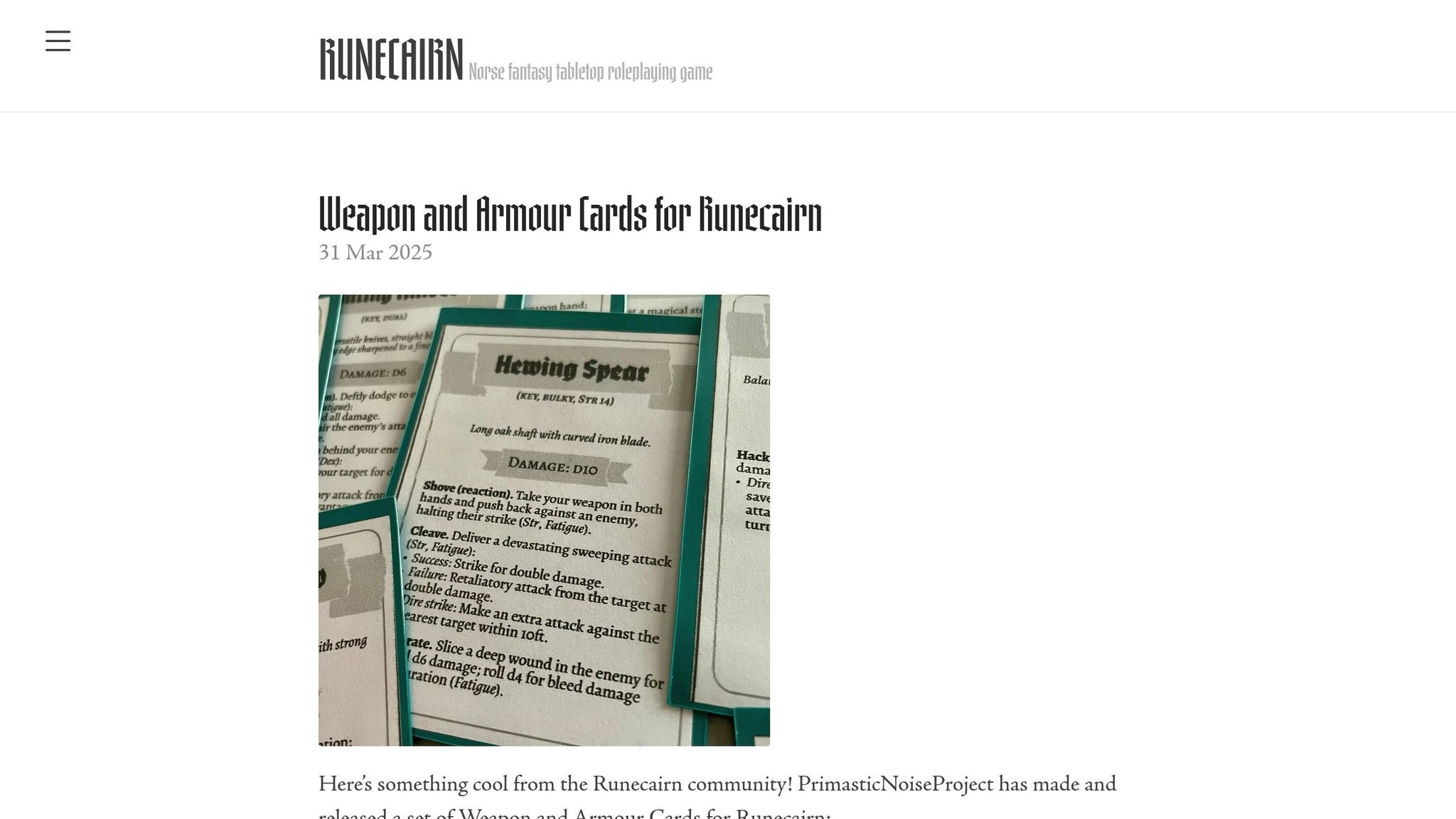
If you're looking for a tabletop RPG that captures the gritty intensity of Soulslike games and lets you share the experience with a friend, Runecairn: Wardensaga has you covered. This Norse-inspired game is crafted specifically for two players: one takes on the role of the Warden (GM), while the other becomes the Adventurer.
Set in a grim, post-Ragnarok world, Runecairn combines a bleak atmosphere with challenging, Soulslike gameplay. With a stellar 4.9-star rating from 93 reviews, it's clear that this game resonates with two-player duos.
Designed for Two, Open to More
What sets Runecairn apart is its focus on two-player sessions. The 84-page, full-color rulebook is packed with everything you need for intimate, focused gameplay but also offers flexibility for additional players to join in. Its rules are simple and streamlined, drawing from Cairn and Into the Odd, and rely on a straightforward d20 roll-under system. This keeps the emphasis on storytelling and tension rather than bogging players down with overly complex mechanics.
Chris McDowall, the mind behind Into the Odd and Electric Bastionland, praised the game, saying:
"I absolutely love Runecairn! As soon as I read it I wanted to steal its ideas. It changed the way I think about the type of games that the Into the Odd system can run."
Combat That Hits Like a Soulslike
The combat system in Runecairn brings the signature risk-reward dynamic of Soulslike games to the table. Players can block, parry, and even backstab, creating a tactical and engaging battle experience. Attacks always land, but armor determines how much damage is absorbed. Special items allow players to deflect, block, or interrupt attacks, adding layers of strategy.
Rich August, a designer at Steamforged Games (Dark Souls: The Roleplaying Game), shared his enthusiasm:
"Thank you for such an awesome game - I loved reading Runecairn and it's on my list of 2022 games to get to the table. And the layout is lovely too."
Welcoming for New Players
For those new to tabletop RPGs, Runecairn offers a tutorial dungeon adventure to ease players into the mechanics. It also features a delve generator, which creates random Viking-inspired adventures, ensuring your post-Ragnarok world stays fresh and exciting.
You can grab the game digitally for $12.50 or as a physical copy for $37.50, which includes a PDF at no extra charge.
Sebrina Calkins, a reviewer, highlighted the game's appeal:
"This is a quality game, adapting Cairn to an apocalyptic Norse setting with a greater emphasis on arms, armour and combat without losing the deadly and considered tone of its forebear."
Runecairn: Wardensaga proves that a two-player tabletop RPG can deliver the same depth, intensity, and satisfaction as larger group games - all while maintaining the personal storytelling that makes these adventures so captivating.
4. Gun&Slinger
If you're looking for a tabletop RPG that breaks away from the usual fantasy tropes, Gun&Slinger delivers a truly unique two-player experience. This game combines a post-apocalyptic setting with inventive mechanics, offering something fresh for seasoned players and newcomers alike. One player takes on the role of a sentient weapon - the Gun - while the other becomes its human companion, the Slinger. Together, they form a bond unlike anything seen in most TTRPGs, setting this game apart from the pack.
With a stellar 4.9 out of 5 stars from 109 ratings, Gun&Slinger has also received notable accolades. It won the IGDN Groundbreakers 2022 Best Rules award and earned an Honorable Mention in Polygon's "Best Indie Tabletop RPGs of 2021".
A World of Mystery and Decay
The game takes place on a desolate, mutated planet - a haunting remnant of a god’s forgotten child. This eerie backdrop fuels the story as players chase down strange bounties, investigate the warped environment, and unlock hidden powers. At the heart of the narrative are three burning questions: What’s hunting the Slinger? Why is the Gun sentient? And what led to the world’s collapse?
Designed to fit into short, episodic sessions, Gun&Slinger works for spontaneous gameplay and doesn’t require a gamemaster, though you can play with one if you choose. It’s built for 2–3 players and uses a standard deck of 52 playing cards instead of dice.
Cards as the Core Mechanic
Say goodbye to rolling dice - Gun&Slinger introduces the MARKED&MADE system, which uses playing cards to resolve challenges. Drawing inspiration from games like Go Fish and Blackjack, players request specific cards from each other to build pairs and overcome obstacles. This adds a layer of strategy, as managing your hand of cards becomes just as important as your character's abilities.
The game’s asymmetrical design ensures each role feels distinct. The Gun wields magic to interact with the world - moving objects, speaking to inanimate things, and teleporting through "Blinking" (determined by flipping the top card of the deck). Meanwhile, the Slinger taps into "The Twist", a darker magical force that can alter both themselves and their surroundings in profound ways.
A Deeply Personal Narrative
What truly sets Gun&Slinger apart is the intimate storytelling it fosters. The Gun and Slinger don’t pursue separate paths; instead, their intertwined journey explores the depths of their connection while unraveling the mysteries of their shattered world.
The game offers plenty of variety with 7 unique character types and 3 distinct settings, ensuring that no two campaigns feel the same. Guided questions and prompts help players craft a customized setting, making every session feel fresh and personal.
You can grab Gun&Slinger digitally for $25.00, or opt for the physical edition, priced at $40.00 MSRP. With its innovative mechanics and deeply engaging narrative, Gun&Slinger proves that two-player TTRPGs can deliver a rich, unforgettable experience without relying on traditional dice or fantasy themes.
sbb-itb-b8b00a5
5. TTRPG Games Directory
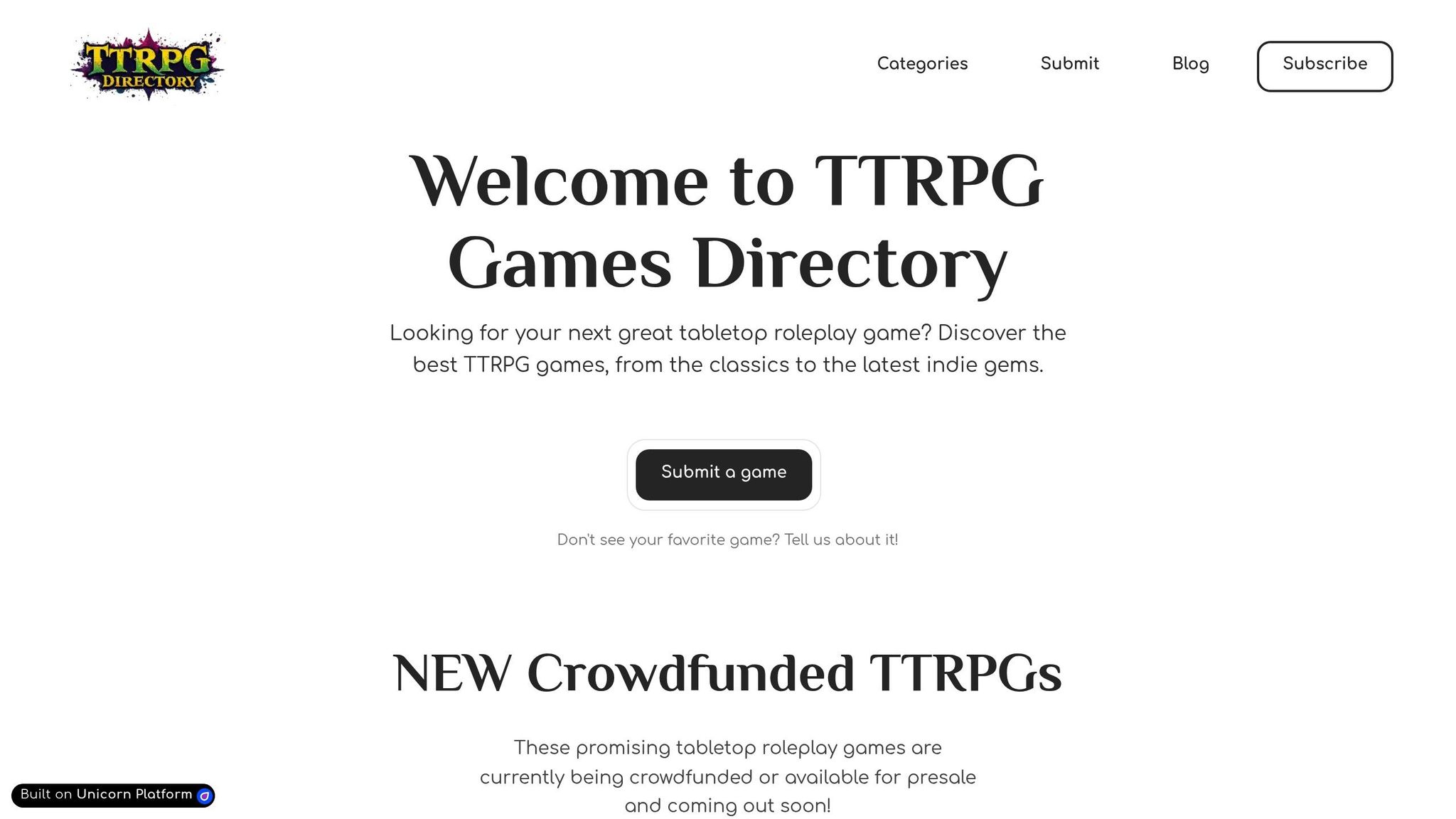
Finding the perfect tabletop RPG for just two players can feel overwhelming with so many options out there. That’s where the TTRPG Games Directory comes in - a handy resource designed to help you discover games tailored specifically for two-player adventures. After diving into some standout examples earlier, this directory offers even more possibilities for creating unforgettable gaming experiences with your duo.
Your Guide to Two-Player TTRPGs
The TTRPG Games Directory offers detailed descriptions of various games, breaking down their mechanics, themes, and unique features. This makes it easier to pinpoint the ones that fit your two-player setup. Whether you’re searching for GM-less games, cooperative storytelling, or specific role-based dynamics (like the Gun and Slinger example), the directory helps you zero in on games that match your preferences.
Tools to Enhance Two-Player Sessions
This directory isn’t just about finding games - it’s also packed with tools to improve your gaming sessions. You can use features like geeklists, bookmarks, and update notifications to organize and customize your experience. There are also adaptation guides to help tweak larger-group campaigns into formats that work for two players. With a few adjustments, you can transform many games into duo-friendly adventures, opening up a wealth of possibilities.
Powered by Community Contributions
One of the directory’s standout features is its community-driven content. Users contribute new games, settings, and even podcasts, keeping the platform fresh and dynamic. It also distinguishes between formats like “Duet” (one player, one GM) and “Two Players with Equal Roles,” so you know exactly what to expect from a game. Plus, with reviews, videos, and supplemental files, you can explore diverse perspectives before making your choice.
The TTRPG Games Directory brings all these insights together in one free, easy-to-use hub. Whether you’re a newcomer to tabletop RPGs or a seasoned player looking to expand your collection, this resource makes it simple to find games that fit your style and create memorable moments with your gaming partner.
How to Run Better Two-Player TTRPG Sessions
Running a two-player tabletop RPG (TTRPG) session is a unique experience that requires a tailored approach. With just two people at the table, every choice feels amplified, and both participants need to feel equally involved in the story. Here are some tips to help you create unforgettable gaming sessions for smaller groups.
Start with Session Zero
Before jumping into the campaign, begin with a session zero to set the stage. Use this time to discuss the tone, genre, and themes of the story you want to tell. For example, decide how dangerous or lighthearted the campaign will be and outline the kind of narrative you're aiming for. In February 2025, StartPlaying emphasized the importance of session zero for setting expectations, suggesting that players discuss tone, content, safety tools, and character building to ensure everyone is aligned.
In a two-player setting, safety tools are especially crucial since there’s no larger group to diffuse uncomfortable moments. Establish clear lines (hard boundaries that shouldn’t be crossed) and veils (elements that remain off-screen) to ensure both participants feel safe and comfortable. This groundwork not only builds trust but also lays the foundation for a collaborative and engaging experience.
Build Characters and Worlds Together
Collaborative character creation and world-building can deepen engagement and provide natural story hooks. Instead of creating characters in isolation, work together to establish shared backstories, relationships, or complementary goals. Ask your player about their vision for the campaign and what their character hopes to achieve.
Take it a step further by building the game world together. This could mean brainstorming political factions, creating side quests, or fleshing out NPCs with shared histories.
"In a duet, because the number of people at the table is so small, the DM and player can approach their storyworld as one they're both responsible for making together." – D&D Duet
You can even invite your player to lead a session or contribute ideas outside of gameplay. This collaborative approach not only lightens the creative load but also keeps the experience fresh and engaging for both parties.
Balance Narrative Focus
With only two players, it’s essential to balance the narrative so both voices shape the story. Pay close attention to engagement levels and ask direct questions to ensure equal spotlight time. For example, during action-packed moments, you might ask how a character reacts to a specific situation to keep them actively involved.
"Spotlight Time is the period when a player takes the lead in shaping the story – much like a soloist stepping into the light during a concert." – Bjarke the Bard
When the story requires splitting focus, alternate between characters regularly and use cliffhangers to maintain excitement. Even when one character isn’t in the spotlight, make sure the other player stays engaged by offering opportunities to interact with the unfolding narrative.
Embrace Flexibility in Storytelling
Two-player campaigns shine when the story evolves naturally. Instead of rigidly plotting every detail, set broad goals and let the players’ choices guide the direction.
"Story is what the PCs did." – OG
This approach allows for dynamic storytelling that adapts to the characters’ growth and interests. Focus on crafting memorable characters, settings, and plot elements that can shift and grow as the adventure unfolds.
Maintain Realistic Expectations
Finally, it’s important to set realistic expectations for pacing and energy levels. Not every session will be action-packed, and that’s okay. Some sessions might feel quieter or slower, and it’s essential to embrace this natural ebb and flow. Discuss comfort levels and boundaries beforehand, and be prepared to adjust as needed. Breaks can be helpful, and if a long campaign feels overwhelming, consider switching to one-shots for a change of pace.
Game Comparison Table
When picking the right two-player TTRPG, your choice often hinges on the themes, complexity, and the kind of experience you’re aiming to create. To make things easier, the table below highlights the core features of each game, offering a quick comparison to help you decide what fits your gaming style.
| Game | Themes | Complexity | GM Requirements | Replayability | Emotional Intensity |
|---|---|---|---|---|---|
| Scarlet Heroes | Traditional sword and sorcery fantasy | Medium | Requires dedicated GM | High – broad range of adventures | Medium – action and character development |
| Star Crossed | Conflicted romance, forbidden attraction | Low | GM-less – shared control | Medium – different relationship dynamics | Very High – intense emotional tension |
Breaking It Down
Complexity refers to how simple the rules are to learn and how much preparation is needed. For example, Star Crossed is the easier option with straightforward mechanics that focus on storytelling. On the other hand, Scarlet Heroes presents a more intricate system that demands more effort but offers deeper strategy and character growth.
GM requirements can also shape your decision. Scarlet Heroes typically calls for a dedicated game master to guide the story, which works well for those who enjoy a traditional narrative structure. Meanwhile, Star Crossed is GM-less, allowing both players to share control of the story - a great fit for collaborative storytelling without the added responsibility of a single GM.
Replayability is another key factor. Scarlet Heroes keeps things exciting with its variety of adventures, ensuring each session feels fresh. In contrast, Star Crossed offers replay value through its exploration of different relationship dynamics and character interactions.
Finally, emotional intensity plays a significant role in setting the tone. Star Crossed thrives on creating deeply emotional experiences, focusing on attraction and interpersonal conflict. Scarlet Heroes, while less intense emotionally, balances thrilling action with meaningful character development.
Choosing Your Game
Think about what kind of experience you’re looking for. If you’re new to two-player TTRPGs, Star Crossed provides an inviting, narrative-driven introduction. For those seeking a game that rewards strategy and long-term character progression, Scarlet Heroes could be the perfect fit.
Conclusion
Two-player TTRPGs bring a unique and intimate experience that larger groups often can't replicate. These games encourage deeper connections through personal and focused storytelling, making each session feel like a journey worth remembering. The dynamics we've explored throughout this article highlight just how special these one-on-one adventures can be.
From classic fantasy epics to emotionally charged narratives, the variety of two-player games ensures there's something for everyone. These stories come to life when shared between two people, weaving narratives that feel personal and impactful.
Another advantage? Scheduling is simpler, and every decision feels significant. For newcomers, these games provide a relaxed way to dive into the hobby without the pressure of performing for a crowd. Their collaborative nature not only strengthens player bonds but also creates natural, flowing stories. Whether you're a couple seeking a creative activity or friends wanting to explore character development, the games mentioned here are great starting points. For more details on mechanics and themes, check out the TTRPG Games Directory - it’s an excellent resource for finding the perfect match for your playstyle.
Forget the idea that tabletop RPGs require big groups. Two-player games offer some of the most memorable and rewarding experiences in the genre. Find a game that sparks your interest, grab a friend or partner, and dive into the world of intimate, collaborative storytelling. For more personalized suggestions, visit the TTRPG Games Directory.
FAQs
What makes two-player TTRPGs a great choice compared to larger group games?
Two-player TTRPGs bring some distinct perks that make them a fantastic option for those craving a more personal and adaptable gaming setup. Coordinating schedules becomes a breeze, as working with just one other person makes it easier to plan spontaneous sessions or slot games into packed calendars.
On top of that, these games shine when it comes to intimate storytelling and in-depth character growth. With only two participants, there's room for richer narratives and stronger emotional bonds between characters. The smaller group size also fosters a more immersive experience, where collaboration and creative problem-solving take center stage. For players looking for a gaming experience that feels custom-fit, two-player TTRPGs are hard to beat.
How do I modify TTRPG adventures for two players?
Adapting tabletop role-playing game (TTRPG) adventures for just two players can be a fun and fulfilling challenge. It all starts with tweaking the mechanics and scaling encounters to fit the smaller group size. A big plus? You can lean into character-driven storytelling, tailoring the narrative to create a more personal and immersive experience.
To keep things running smoothly, consider cutting down the number of NPCs and simplifying overly complex scenarios. If the original adventure feels too sprawling, narrow the focus to highlight the players' decisions and the dynamics between their characters. By carefully adjusting combat difficulty and pacing, you can ensure the game stays exciting and enjoyable for both players.
How can I choose the right two-player TTRPG for my gaming style?
To find the ideal two-player TTRPG, start by identifying the kind of gameplay you enjoy most - whether that's rich storytelling, tactical combat, or exploring expansive worlds. Games like Ironsworn and Legacy of Dragonholt are great options, as they're designed with smaller groups in mind, making them well-suited for two-player sessions.
Next, think about the game's mechanics and complexity. Are you drawn to straightforward rules that keep things moving quickly, or do you enjoy more detailed systems that let you dive into complex strategies? Lastly, focus on the themes and tone that excite you. Choosing a game with a narrative that matches your interests will make the experience even more immersive and enjoyable.
